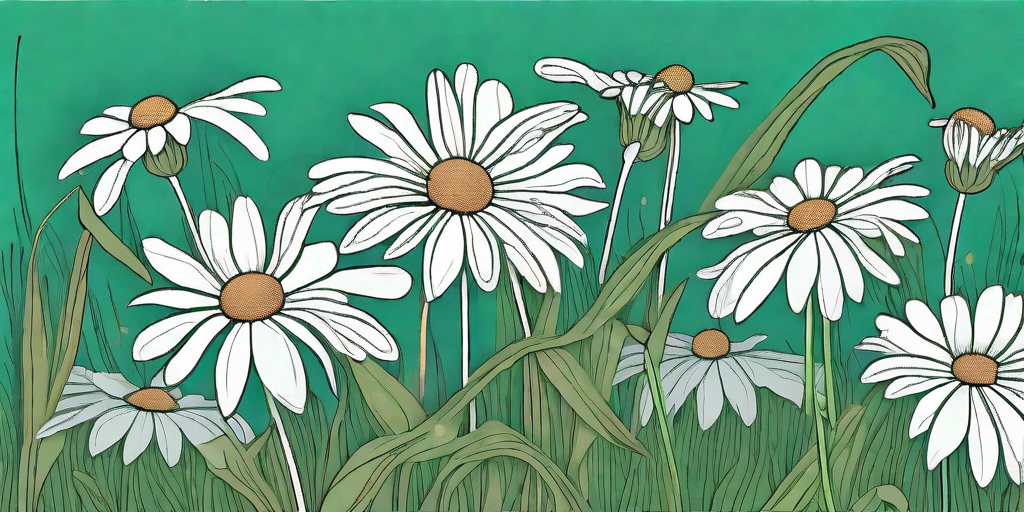
Ah, the Shasta Daisy, a perennial favorite among garden enthusiasts and the bane of those who struggle to keep them alive. These beautiful, white-petaled flowers with their sunny yellow centers are the epitome of summer, but they can be a bit finicky. If you've found yourself with a garden full of deadhead Shasta Daisies, don't despair! We're here to guide you through the process of bringing them back to life.
Understanding the Shasta Daisy
The first step in reviving your Shasta Daisies is understanding them. These aren't your run-of-the-mill, garden-variety daisies. Shasta Daisies are a hybrid species, created by the American horticulturist Luther Burbank. They're a bit like the divas of the daisy world, demanding a bit more attention and care than their less fussy cousins.
Shasta Daisies thrive in full sun and well-drained soil. They're also fans of a good haircut, responding well to deadheading, which is the removal of faded or dead flowers. This not only improves the plant's appearance but also encourages further blooming. However, if you've been a bit overzealous with the pruning shears, you might find yourself with a bunch of deadheads. But fear not, we're here to help you remedy that situation.
Reviving Your Shasta Daisies
Now that we've got the introductions out of the way, let's get down to the nitty-gritty of bringing your Shasta Daisies back to life. It's not as complicated as it might seem, and with a bit of patience and care, you'll have your garden looking like a daisy wonderland in no time.
Step 1: Assess the Situation
Before you start, take a good look at your daisies. Are they all deadheads, or are there a few survivors? If there are some flowers still blooming, you're in luck. This means your plant is still alive and kicking, and with a bit of TLC, you can encourage more flowers to bloom.
If, however, all your flowers are deadheads, don't panic. This doesn't necessarily mean your plant is dead. It might just be in a dormant state, waiting for the right conditions to start growing again. In this case, your job is to create those conditions.
Step 2: Prune the Deadheads
Pruning is an essential part of reviving your Shasta Daisies. You'll need a pair of sharp pruning shears for this task. Start by cutting off the dead flowers, making sure to cut back to the next set of leaves. This will encourage new growth and hopefully, new flowers.
Remember, pruning is not a punishment, it's a spa treatment. Think of it as giving your daisies a much-needed haircut. They might not look their best immediately after, but give them some time, and they'll thank you with a burst of new blooms.
Step 3: Water and Fertilize
After a good pruning, your daisies will be thirsty and hungry. Water them thoroughly, making sure the soil is well-drained. Overwatering can lead to root rot, which is a surefire way to kill your daisies. So, remember, water generously but wisely.
Next, give your daisies a good feed. Use a balanced, slow-release fertilizer to provide them with the nutrients they need to grow. Follow the instructions on the fertilizer package to ensure you're not over or underfeeding your plants.
Auxiliary Details
Now that we've covered the basics of reviving your Shasta Daisies, let's delve into some auxiliary details that can help you maintain a healthy and vibrant garden.
Preventing Pests and Diseases
Shasta Daisies, like all plants, can be susceptible to pests and diseases. Common problems include aphids, slugs, and powdery mildew. To prevent these issues, keep an eye on your plants and take action at the first sign of trouble. Use organic pest control methods and fungicides to keep your garden healthy and safe.
Remember, prevention is better than cure. Regularly inspect your plants, keep them well-watered and fed, and they'll be less likely to succumb to pests and diseases.
Maintaining Your Shasta Daisies
Maintenance is key to keeping your Shasta Daisies healthy and blooming. Regular pruning, watering, and fertilizing will keep your plants happy. But remember, every plant is unique and may require slightly different care. Pay attention to your plants and adjust your care routine as needed.
Also, consider rotating your crops every few years. This can help prevent soil depletion and keep your garden healthy and diverse.
Frequently Asked Questions
- How often should I water my Shasta Daisies?
Shasta Daisies prefer well-drained soil, so it's best to water them when the top inch of soil feels dry to the touch. In hot, dry weather, you might need to water them more frequently.
- Can Shasta Daisies grow in the shade?
While Shasta Daisies can tolerate partial shade, they prefer full sun. If your daisies are in a shady spot and not blooming well, consider moving them to a sunnier location.
- Why are my Shasta Daisies not blooming?
There could be several reasons why your daisies are not blooming. They might not be getting enough sun, they could be overcrowded, or they might be lacking nutrients. Check the growing conditions and make adjustments as needed.
So there you have it, a comprehensive guide to reviving your Shasta Daisies. With a bit of patience and care, you can turn your garden from a daisy graveyard into a daisy paradise. Happy gardening!















